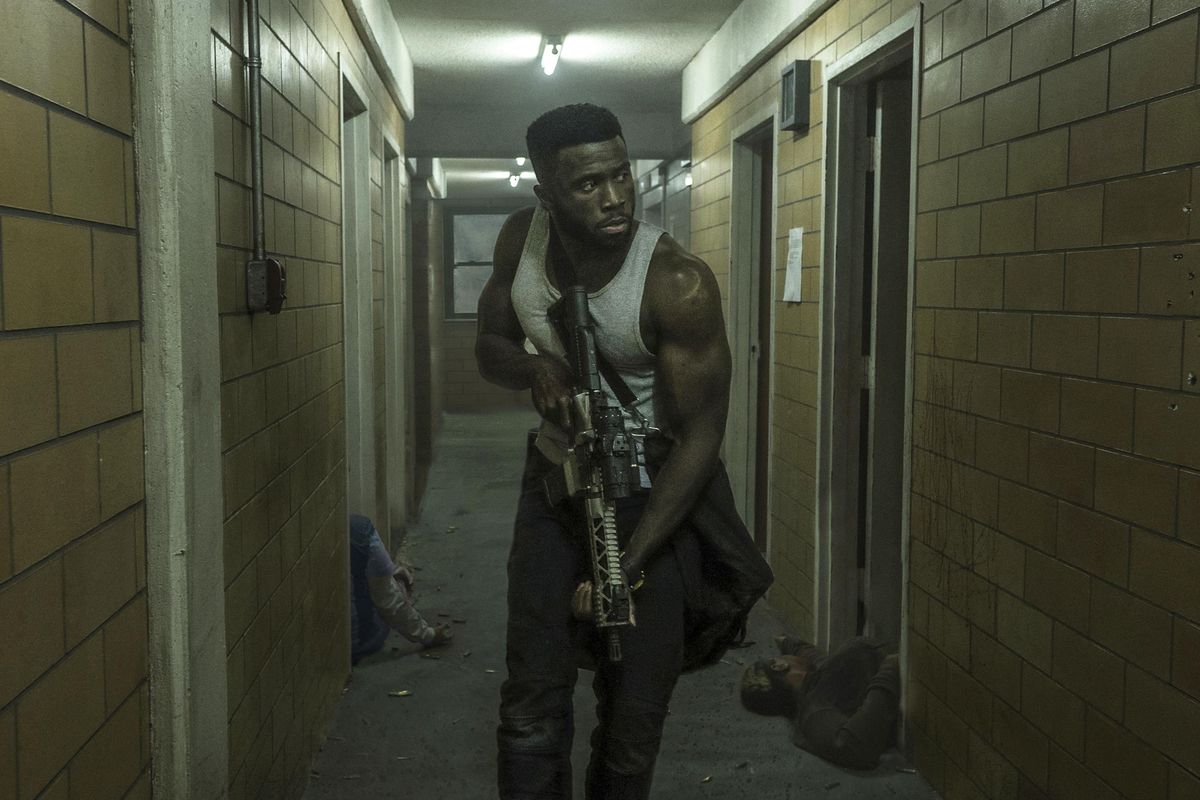Review: The riskiest-ever federal entitlement program begins in ‘Purge’ prequel

Warning: The following review contains references to the political content, rampant and pointed, in the “Purge” franchise begun in 2013. With these movies, there’s no way around what they’re really saying.
The latest “Purge” is an erratic, fairly absorbing and righteously angry prequel. It sets up scenarios in which African-American and Latino resistance fighters rebel against the dear white people exploiting them for bloody political gain. Honestly: There is no avoiding politics and messaging with that setup.
When last we purged, two summers back with “The Purge: Election Year” (2016), our current president was a few months away from the White House. In various degrees of bluntness, screenwriter/director/executive producer James DeMonaco had a few things to say about the fear-mongering tactics that would ultimately put him there.
Now, with a new DeMonaco script directed by second-time feature filmmaker Gerard McMurray, “The First Purge” imagines what went down, and why, with the initial 12-hour crime-and-murder spree allowing an angry, disenfranchised U.S. citizenry to blow off steam with zero consequences.
For newbies: This is set a few short years in the future. The third-party American ruler represents the New Founding Fathers of America, backed by the National Rifle Association. The prequel has it that a nonpartisan behavioral scientist has designed the 12-hour societal “experiment” as a way of lessening the crime rate and providing a mass catharsis. Looking a little dazed, Marisa Tomei plays the scientist, Dr. Updale, so named presumably because Dr. Downhill was taken.
The experiment unfolds on Staten Island, N.Y., and those participating in the purge receive $5,000 plus a bonus if they ramp up the bloodshed personally. Via the characters’ creepy blue surveillance contact lenses, we, the audience, witness the havoc they wreak. The first few seconds of screen time belong to the story’s stone-cold psycho (Rotimi Paul, truly scary as Skeletor). I took no pleasure in the block-party sequence where Skeletor randomly selects his next victims. (It’s vicious in a morally inert fashion.) But the franchise lives (or dies) on its own hypocrisy, shaking its head at a society encouraging such sickness while relishing the narrative possibilities.
Neighborhood activist Nya (Lex Scott Davis, lately of “Superfly” and this film’s sole grace note amid the carnage) and her ex-lover, drug lord Dmitri (Y’lan Noel, beefy but indistinct) join forces under fire. They have neighbors and friends and business interests to protect. One of the wittier details in DeMonaco’s functional, largely generic script finds the slavish TV news anchors frustrated by the purge’s relatively sluggish start. Then the government’s own goon squads, to Dr. Updale’s alarm, enter the fray.
The bulk of “The First Purge” is pursuit and evasion, attack and counterattack, multiple, frenzied stabbings followed by multiple, frenzied rounds of automatic gunfire tearing through flesh. A key group of Staten Island residents seek sanctuary in a church, foolishly, while Nya’s little brother (Joivan Wade) risks his already-injured neck on the streets. “We are all Staten Islanders tonight,” the president intones at one point, waiting for things to start cooking.
Modestly budgeted, the “Purge” series has worked fast – four movies in six years. The new one’s the most violent, but also the least propulsive, with a deliberate, lurching, stop-and-start rhythm and subpar digital photography. Still, it’s notable how “The First Purge” puts its Trump-trolling instincts first, riffing on everything from the Access Hollywood tape to the casting of Patch Darragh as the string-pulling chief of staff. The actor bears a suspicious resemblance to onetime Trump communications director Sean Spicer. Once the Klan-hooded purgers show up, however, practically begging the people of color on screen for a comeuppance, the men sporting little American flag pins on their well-pressed lapels cease to matter much.